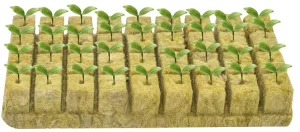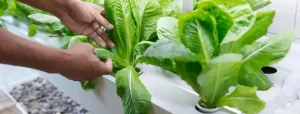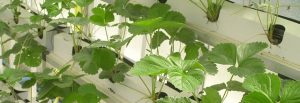Powerful Hydroponic Fertilizer at Home 2023

Table of Contents
Hydroponics is a method of growing plants without soil, using a nutrient-rich water solution instead. In hydroponic systems, plants rely entirely on the nutrient solution provided by the grower, so it’s crucial to ensure that the solution contains all the essential nutrients in the right proportions.
Using proper fertilizer in hydroponics is important because it directly affects plant growth, health, and yield, and in this article we will explain how to make your own hydroponic fertilizer at home.
Without the right nutrients, plants may grow slowly or produce poor-quality crops. In contrast, providing the correct nutrient solution can result in faster growth, higher yields, and healthier plants.
Additionally, using the right fertilizer in hydroponics can help prevent common issues like nutrient deficiencies, toxicities, and pH imbalances that can hinder plant growth.
The Main Types of Nutrients Plants Need
Plants require several essential nutrients to grow and thrive, and these can be broadly categorized into two types: macronutrients and micronutrients.
- Macronutrients: Plants require macronutrients in relatively large quantities. The primary macronutrients are nitrogen (N), phosphorus (P), and potassium (K), also known as NPK. These nutrients are typically included in fertilizers in the form of salts. Other macronutrients include calcium (Ca), magnesium (Mg), and sulfur (S).
- Micronutrients: Plants require micronutrients in much smaller quantities than macronutrients, but they are still essential for healthy growth. These include iron (Fe), manganese (Mn), zinc (Zn), copper (Cu), boron (B), molybdenum (Mo), and chlorine (Cl).
The main difference between the nutrient requirements of hydroponic and soil-grown plants is that hydroponic plants rely entirely on the nutrient solution provided by the grower, while soil-grown plants can extract nutrients from the soil.
In soil, nutrients are often present in complex organic forms that need to be broken down by microorganisms before plants can use them.
In hydroponics, the nutrients are already in a readily available form, which allows plants to grow faster and more efficiently.
However, it also means that hydroponic growers need to ensure that the nutrient solution contains all the essential nutrients in the right proportions to support healthy plant growth.
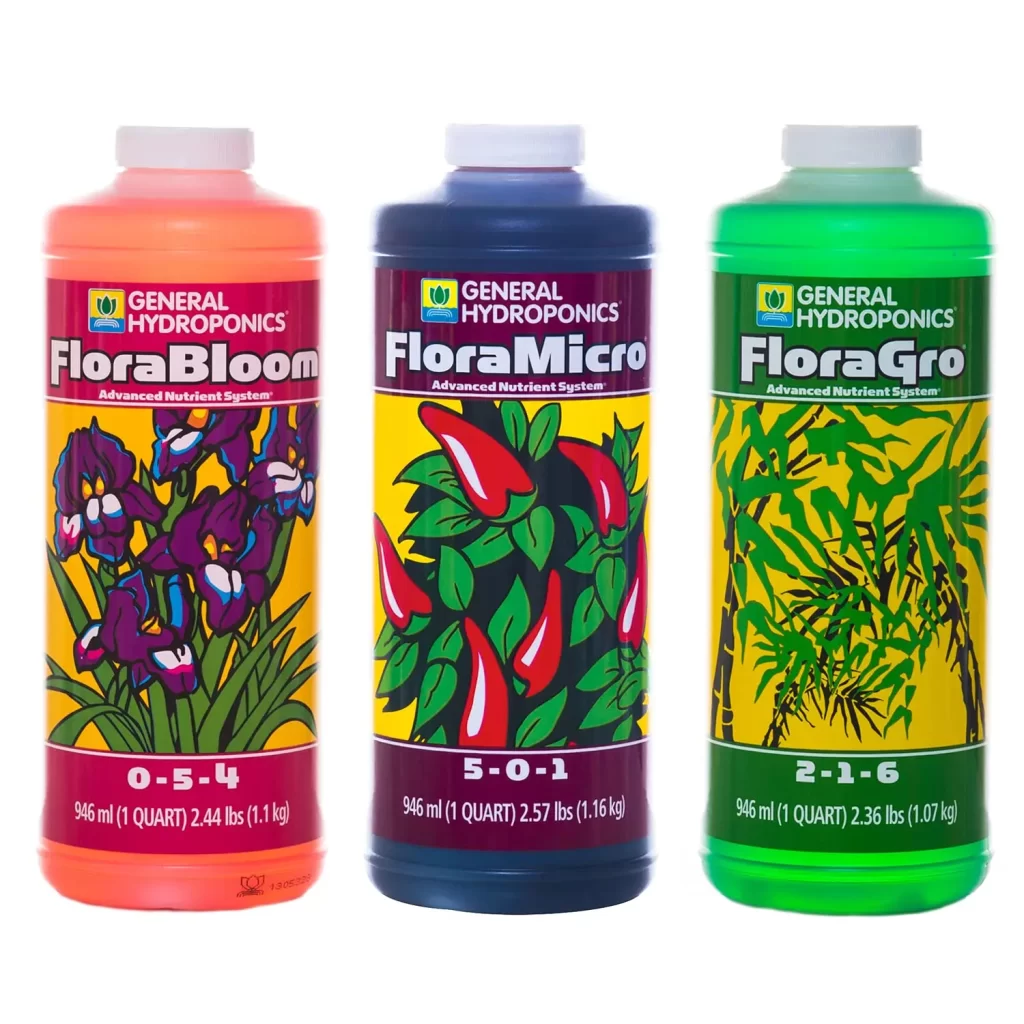
Introducing the Concept of EC (Electrical Conductivity) and pH
EC (electrical conductivity) and pH are two important measurements that hydroponic growers use to monitor and adjust the nutrient solution.
EC measures the concentration of dissolved salts in the nutrient solution, which is an indicator of its nutrient strength. The higher the EC, the more concentrated the nutrient solution is. EC is typically measured in units of millisiemens per centimeter (mS/cm) or microsiemens per centimeter (µS/cm) using an EC meter.
pH measures the acidity or alkalinity of the nutrient solution. The optimal pH range for most hydroponic plants is between 5.5 and 6.5, although this can vary slightly depending on the plant species. pH is measured on a scale from 0 to 14, with 7 being neutral, values below 7 indicating acidity, and values above 7 indicating alkalinity. pH is typically measured using a pH meter or pH test strips.
To measure EC and pH, growers can use specialized meters or test kits that are designed for hydroponic use. EC meters typically consist of a probe that is inserted into the nutrient solution, and the meter displays the EC reading.
pH meters work similarly, with a probe that is inserted into the nutrient solution and displays the pH reading. pH test strips are an alternative to meters, which change color when dipped into the nutrient solution and can be compared to a color chart to determine the pH level.
It’s important to regularly monitor both EC and pH in hydroponic systems and adjust them as needed to ensure optimal plant growth.
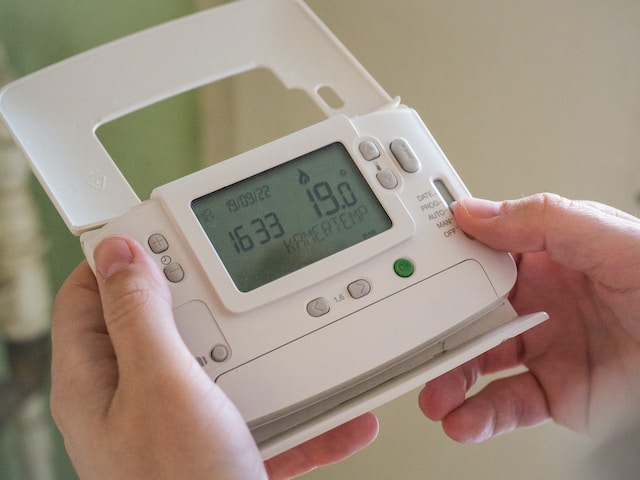
The Importance of Proper Nutrient Ratios and How To Calculate Them
Proper nutrient ratios are crucial for healthy plant growth in hydroponics. Plants require different nutrients in specific ratios depending on their growth stage, species, and environmental conditions.
Providing the correct nutrient ratios helps ensure that plants receive all the essential nutrients they need for optimal growth, while also minimizing the risk of nutrient imbalances, which can cause plant health problems and reduced yields.
To calculate nutrient ratios for hydroponic systems, growers typically use nutrient solution calculators or tables that provide recommendations for different plant species and growth stages.
These calculators take into account the nutrient requirements of the plants, the EC and pH levels of the nutrient solution, and the specific fertilizer products being used.
For example, let’s say a grower wants to grow tomatoes in a hydroponic system. The nutrient calculator may recommend a nutrient solution with an EC of 1.8 mS/cm and a pH of 6.0, with the following nutrient ratios:
- Nitrogen (N): 200 ppm
- Phosphorus (P): 100 ppm
- Potassium (K): 250 ppm
- Calcium (Ca): 200 ppm
- Magnesium (Mg): 50 ppm
- Sulfur (S): 50 ppm
- Iron (Fe): 2 ppm
- Manganese (Mn): 1 ppm
- Zinc (Zn): 0.5 ppm
- Copper (Cu): 0.1 ppm
- Boron (B): 0.5 ppm
- Molybdenum (Mo): 0.01 ppm
To achieve these nutrient ratios, the grower may mix specific fertilizer products in the appropriate proportions to create the nutrient solution.
It’s essential to measure the EC and pH of the nutrient solution regularly and adjust as needed to maintain the recommended nutrient ratios.
In summary, proper nutrient ratios are critical for healthy plant growth in hydroponics, and growers should use nutrient calculators or tables to ensure that their nutrient solution contains all the necessary nutrients in the right proportions.
Regular monitoring and adjustment of EC and pH levels are also essential to maintain proper nutrient ratios and ensure optimal plant growth.
A General Recipe for Basic Hydroponic Nutrient Solution
Here is a general recipe for a basic hydroponic nutrient solution that can be used as a starting point for many plant species:
- 1 gallon of water
- 2.5 – 3 grams of calcium nitrate
- 1 gram of potassium nitrate
- 1 gram of magnesium sulfate (Epsom salt)
To mix the nutrient solution, follow these steps:
- Fill a clean container with 1 gallon of water.
- Add the calcium nitrate to the water and stir until completely dissolved.
- Add the potassium nitrate and stir until completely dissolved.
- Add the magnesium sulfate and stir until completely dissolved.
- Adjust the pH of the solution to the appropriate level for your plants. Most plants prefer a pH range of 5.5 to 6.5.
- Measure the EC of the solution using an EC meter and adjust as necessary to achieve the desired strength.
This basic nutrient solution provides the essential macronutrients and micronutrients required by many plants, including nitrogen (N), phosphorus (P), potassium (K), calcium (Ca), magnesium (Mg), and sulfur (S).
However, the nutrient requirements of plants can vary widely, and different plants may require different nutrient ratios and concentrations. Therefore, it’s important to consult nutrient solution calculators or tables to determine the appropriate nutrient recipe for the specific plant species and growth stage being grown.
The Different Types of Fertilizers That Can Be Used and Their Pros and Cons
In hydroponics, there are several types of fertilizers that can be used to provide plants with the essential nutrients they need to grow and thrive.
Each type of fertilizer has its own pros and cons, and the choice of fertilizer will depend on factors such as the specific plant species being grown, the growth stage, and the availability of nutrients in the local water supply.
- Liquid fertilizers: Liquid fertilizers are a popular choice for hydroponic systems as they are easy to use and can be quickly absorbed by plants. They are typically sold as concentrated solutions that are diluted with water to create the desired nutrient strength.
One advantage of liquid fertilizers is that they can be tailored to meet the specific nutrient requirements of different plant species and growth stages.
However, liquid fertilizers can be more expensive than other types of fertilizers, and they may not provide the same level of long-term nutrient availability. - Powdered fertilizers: Powdered fertilizers are another common choice for hydroponic systems, as they are easy to store and transport and can be less expensive than liquid fertilizers.
They are typically sold in pre-measured packets or can be purchased in bulk and mixed with water to create a nutrient solution. One disadvantage of powdered fertilizers is that they can be more difficult to dissolve completely, which can lead to clogging in irrigation systems. - Organic fertilizers: Organic fertilizers are derived from natural sources such as compost, manure, or fish emulsion, and are a popular choice for growers who prefer to use natural products.
Organic fertilizers are typically slower to release nutrients than synthetic fertilizers, but they can provide a longer-term source of nutrients and help improve soil structure and fertility. However, organic fertilizers may be less precise in their nutrient composition, which can make it more challenging to provide plants with the exact nutrients they need. - Synthetic fertilizers: Synthetic fertilizers are made from chemical compounds and are a common choice for hydroponic growers due to their precise nutrient composition and rapid nutrient availability.
They can provide plants with a wide range of essential nutrients in specific ratios, making it easier to tailor the nutrient solution to meet the specific needs of different plant species and growth stages.
However, synthetic fertilizers can be more expensive than other types of fertilizers, and overuse can lead to nutrient imbalances and environmental pollution.
In summary, there are several types of fertilizers that can be used in hydroponic systems, and the choice of fertilizer will depend on factors such as the specific plant species being grown, the growth stage, and the availability of nutrients in the local water supply.
Growers should carefully consider the pros and cons of each type of fertilizer to determine the best option for their individual needs.
Tips For Adjusting The Nutrient Solution to Suit Different Plants
Adjusting the nutrient solution to suit different plant species and growth stages is an essential aspect of hydroponic growing. Here are some tips for adjusting the nutrient solution:
- Understand the nutrient requirements of the plant: Different plant species have different nutrient requirements, and these requirements can vary depending on the growth stage. It’s essential to research the specific nutrient needs of the plant being grown and adjust the nutrient solution accordingly.
- Use a nutrient calculator or table: Nutrient calculators or tables can help growers determine the appropriate nutrient ratios and concentrations for different plant species and growth stages. These tools can also help identify nutrient deficiencies or excesses, and recommend appropriate adjustments.
- Monitor EC and pH levels: Regular monitoring of the electrical conductivity (EC) and pH levels of the nutrient solution is critical to ensuring plants receive the appropriate amount of nutrients. Adjustments can be made to the nutrient solution based on changes in EC and pH levels, and the desired range for each plant species should be researched beforehand.
- Adjust nutrient strength: The strength of the nutrient solution can be adjusted by adding or subtracting specific nutrients. For example, during the vegetative growth stage, plants require higher levels of nitrogen (N) and lower levels of phosphorus (P) and potassium (K), while during the flowering stage, the ratios of N, P, and K should be adjusted to support flower development.
- Use additives as needed: In addition to macronutrients and micronutrients, some plants may benefit from the addition of specific additives, such as calcium or magnesium supplements. These supplements can help address nutrient deficiencies and improve plant health.
- Record and adjust: Keep track of the adjustments made to the nutrient solution and the resulting plant growth and health. This information can be used to fine-tune the nutrient solution for future crops and to troubleshoot any issues that may arise.
In summary, adjusting the nutrient solution to suit different plant species and growth stages requires careful monitoring, research, and record-keeping.
By following these tips, hydroponic growers can provide plants with the appropriate nutrients at each growth stage, leading to healthy and vigorous growth.
how to mix and dissolve the fertilizer in water and adjust the pH and EC
Mixing and dissolving fertilizer in water for hydroponics requires careful attention to detail to ensure that the nutrient solution is properly balanced and adjusted for the needs of the plants.
Here are the general steps for mixing and dissolving hydroponic fertilizer in water:
- Measure the water: Start by measuring the amount of water needed for the nutrient solution. The water used should be clean and free of contaminants, such as chlorine, which can harm plants. Use a pH meter to measure the pH of the water, and adjust it if necessary to the desired range for the plant species being grown.
- Measure the fertilizer: Use a scale to measure the appropriate amount of fertilizer for the volume of water being used. Always follow the manufacturer’s instructions for the recommended dosage, as over-fertilizing can harm plants. Add the fertilizer to the water and stir until it is fully dissolved.
- Adjust the pH and EC: After the fertilizer has been added and dissolved, use a pH meter to measure the pH of the nutrient solution. The ideal pH range for most plants is between 5.5 and 6.5, but this can vary depending on the plant species. Adjust the pH up or down as needed using a pH up or pH down solution until it reaches the desired range.
- Measure the EC: Use an EC meter to measure the electrical conductivity of the nutrient solution. The EC reading indicates the concentration of dissolved nutrients in the solution, and the ideal range will vary depending on the plant species and growth stage. Adjust the EC by adding more water or fertilizer to the solution until it reaches the desired range.
- Stir and aerate the solution: Once the nutrient solution has been adjusted to the desired pH and EC levels, stir it thoroughly to ensure that the fertilizer is evenly distributed throughout the solution. Aerate the solution using an air stone or similar device to provide oxygen to the roots of the plants.
By following these steps, hydroponic growers can mix and dissolve their fertilizer in water and adjust the pH and EC levels to create a nutrient solution that meets the needs of their plants.
It’s important to regularly monitor and adjust the nutrient solution to ensure that plants receive the appropriate nutrients at each growth stage.
The Benefits and Challenges of Using Organic Fertilizers in Hydroponics
Organic fertilizers have become increasingly popular in hydroponics because they offer several benefits, including improved plant growth, reduced environmental impact, and increased nutrient retention. However, there are also some challenges associated with using organic fertilizers in hydroponics.
Benefits:
- Improved plant growth: Organic fertilizers contain a range of essential nutrients, such as nitrogen, phosphorus, and potassium, as well as micronutrients, which can help to improve plant growth and health.
- Reduced environmental impact: Organic fertilizers are made from natural sources and are generally less harmful to the environment than synthetic fertilizers, which can contain harmful chemicals that can leach into the soil and water.
- Increased nutrient retention: Organic fertilizers release nutrients more slowly than synthetic fertilizers, which means that they are less likely to leach out of the growing medium and are more readily available for plant uptake.
Challenges:
- Variable nutrient content: Organic fertilizers can vary in nutrient content, which can make it difficult to determine the appropriate dosage for the nutrient solution. This can lead to nutrient deficiencies or excesses, which can harm plant growth and health.
- Risk of contamination: Organic fertilizers can contain pathogens or contaminants that can harm plants or pose a risk to human health. It’s important to carefully source and handle organic fertilizers to minimize this risk.
- Clogging and blockages: Organic fertilizers can contain particulate matter that can clog irrigation systems or block the uptake of nutrients by plants. Careful filtering and monitoring of irrigation systems can help to mitigate this risk.
In summary, organic fertilizers offer several benefits for hydroponic growing, including improved plant growth, reduced environmental impact, and increased nutrient retention.
However, they also present some challenges, including variable nutrient content, risk of contamination, and potential clogging or blockages. Hydroponic growers should carefully research and consider these factors when deciding whether to use organic fertilizers in their nutrient solution.
Some Common Organic Fertilizers and Their Nutrient Profiles
There are several types of organic fertilizers that can be used in hydroponics, each with its own nutrient profile and benefits. Here are some common organic fertilizers and their nutrient profiles:
- Fish emulsion: Fish emulsion is made from the remains of processed fish, and is a rich source of nitrogen, phosphorus, and potassium, as well as micronutrients such as calcium and magnesium. It is typically diluted with water and used as a liquid fertilizer in hydroponics.
- Worm castings: Worm castings are the organic matter left behind after earthworms digest plant material. They are a rich source of nitrogen, phosphorus, and potassium, as well as micronutrients such as calcium and magnesium. They can be added to the growing medium or used as a top dressing.
- Bat guano: Bat guano is a rich source of nitrogen, phosphorus, and potassium, as well as micronutrients such as calcium, magnesium, and zinc. It is typically sold in powdered form and can be added to the nutrient solution or mixed with the growing medium.
- Compost tea: Compost tea is a liquid fertilizer made by steeping compost in water. It is a rich source of nitrogen, phosphorus, and potassium, as well as micronutrients such as calcium and magnesium. It can be used as a foliar spray or added to the nutrient solution.
- Seaweed extract: Seaweed extract is made from seaweed and is a rich source of micronutrients such as iron, zinc, and manganese, as well as growth hormones that can stimulate plant growth. It is typically sold in liquid form and can be added to the nutrient solution or used as a foliar spray.
Each of these organic fertilizers has its own unique nutrient profile, and can be used to supplement the nutrient solution in hydroponics. It’s important to carefully research and understand the nutrient content of each fertilizer to ensure that plants receive the appropriate balance of nutrients for optimal growth and health.
Recipe for Making an Organic Hydroponic Fertilizer at Home
Here’s a recipe for making an organic hydroponic fertilizer at home:
Ingredients:
- 1 part worm castings
- 1 part compost
- 1 part bat guano
- 1 part kelp meal
- 1/2 part rock phosphate
- 1/2 part greensand
Instructions:
- Mix all of the ingredients together in a large container or bucket.
- Add water to the mixture and stir until it forms a thick slurry.
- Let the mixture sit for 24-48 hours to allow the nutrients to fully dissolve and mix together.
- Strain the mixture through a fine mesh screen or cheesecloth to remove any solids or particulates.
- Use the resulting liquid as a nutrient solution in your hydroponic system, diluting it as needed to achieve the desired nutrient levels.
This organic hydroponic fertilizer recipe contains a balanced blend of nitrogen, phosphorus, and potassium, as well as micronutrients and trace elements that are essential for plant growth and health.
It is important to carefully measure and monitor the pH and EC levels of the nutrient solution to ensure that plants are receiving the appropriate balance of nutrients. Additionally, it’s recommended to test the nutrient solution periodically to ensure that it remains free of pathogens or contaminants that can harm plants.

Safety Tips and Best Practices for Storing, Handling, and Using Hydroponic Fertilizers
Storing, handling, and using hydroponic fertilizers can be safe if you follow the recommended safety tips and best practices. Here are some tips to help you minimize the risks associated with handling and using hydroponic fertilizers:
- Read the label: Always read the label and follow the instructions provided by the manufacturer. This will help you determine how to properly store and handle the fertilizer, as well as how much to use and how often to apply it.
- Wear protective gear: Always wear gloves, goggles, and a dust mask when handling and mixing fertilizers. This will help protect your skin and eyes from irritation and prevent inhalation of harmful fumes or dust.
- Store fertilizers properly: Keep fertilizers in their original containers and store them in a cool, dry, and well-ventilated area that is out of reach of children and pets. Make sure to keep fertilizers away from sources of heat, flame, or direct sunlight.
- Mix fertilizers safely: Always add fertilizers to water, never the other way around. This will help prevent splashing and potential injury. Mix the fertilizers slowly and carefully to prevent spills and to ensure proper dilution.
- Label your solutions: Always label your nutrient solutions with the date, type of fertilizer, and nutrient levels. This will help you keep track of when you made the solution and make sure you are providing the correct nutrient balance for your plants.
- Monitor nutrient levels: Regularly test your nutrient solution for pH and EC levels to ensure that they are within the appropriate range. Make any necessary adjustments to ensure your plants are receiving the correct nutrient balance.
- Dispose of fertilizers properly: Do not pour fertilizers down the drain or into bodies of water. Check with your local waste management facility for guidelines on how to dispose of fertilizers properly.
By following these safety tips and best practices, you can minimize the risks associated with handling and using hydroponic fertilizers, and ensure the health and safety of both your plants and yourself.
Conclusion
This article discusses the importance of using proper fertilizers in hydroponic systems. It explains the main types of nutrients plants need and how they differ from soil-grown plants.
The article introduces the concept of electrical conductivity (EC) and pH and how to measure them. It discusses the importance of proper nutrient ratios and provides a general recipe for a basic hydroponic nutrient solution.
The article also discusses the different types of fertilizers that can be used and their pros and cons, including organic fertilizers.
Tips for adjusting the nutrient solution to suit different plant species and growth stages are also provided.
The article explains how to mix and dissolve the fertilizer in water and adjust the pH and EC. The potential risks and hazards of handling and using hydroponic fertilizers are discussed, as well as safety tips and best practices for storing, handling, and using hydroponic fertilizers. Finally, the article provides a recipe for making an organic hydroponic fertilizer at home.

